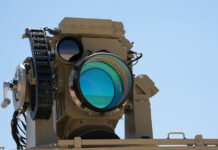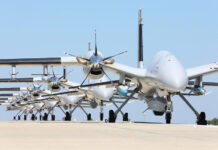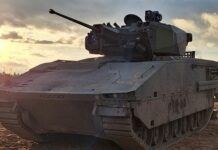In an interview to Defense Update, RAFAEL’s VP R&D, Dr. Avi Ginsburg outlined the trends RAFAEL is following in its pursuit for the development of systems for modern asymmetric warfare and low intensity conflict.
As the primary R&D center in Israel, RAFAEL, in cooperation with Israel’s Ministry of defense and Directorate of Defense R&D (DDR&D), is always challenged with the development of new means to equip the Israeli forces with the best, most innovative means and weapon systems. However, the ongoing “Low Intensity Conflict” (LIC) fought between the Palestinian and Israel’s military and security forces poses new aspects of asymmetric warfare, which reflects on the requirements for new systems, and requests for ad-hoc solutions.
“In the recent years RAFAEL was repeatedly requested to provide such ad hoc solutions for unique issues” Dr. Ginsburg told Defense Update, “When Palestinians improvised rockets were first launched at Israeli towns and villages, RAFAEL was requested to deploy a highly accurate artillery locating system which was under development at our labs. We deployed this system, now known as “Red Dawn”, which provides selective early warning to every villages endangered by improvised rockets launched fro the Gaza strip. These warnings enable the civilian population to take cover, thus minimizing the risk of such attacks. “Unlike previous acoustic-based systems, RAFAEL’s ‘Red Dawn’ is very accurate, to enable accurate prediction of impact point or launch point, therefore, providing the Israeli population with selective, and localized early warning while enabling the military to localize and counteract against the launch sites.”
Another challenge was the risk of subterranean warfare, also faced by the IDF along the border with Gaza. Under cooperation with a Hadas, the two companies are developing acoustic systems that are able to detect and localize subterranean activity. According to Ginsburg, this requirement posed a significant technological challenge that’ once solved, could be used for many commercial uses, including protection of gas and oil pipelines.
Another “quick fix” solution is the use of laser gun to neutralize improvised explosives. A prototype system designed by RAFAEL will soon be deployed to Iraq. Dr. Ginsburg told Defense Update that the system could be installed on a weapon station, side by side to a machine gun, and be activated against suspicious objects. If an explosive charge is encountered, it will be neutralized (burned) by the laser beam, rather than explode, thus eliminating the risk to troops or innocent bystanders.
Dr. Ginsburg considers RAFAEL’s strength in its multi-disciplinary technological base, and advanced technology capabilities. Advanced computing is only one of these factors, driven by the general market growth. Other capabilities are nourished in- house, as well as subsidiaries where RAFAEL share unique technologies with other partners. Of these Ginsburg mentioned the Semiconductor Devices (SCD) EO/IR detectors center operated under cooperation with Elbit Systems and a fab for micromechanics (MEMS) established under cooperation with IAI/Elta.



















